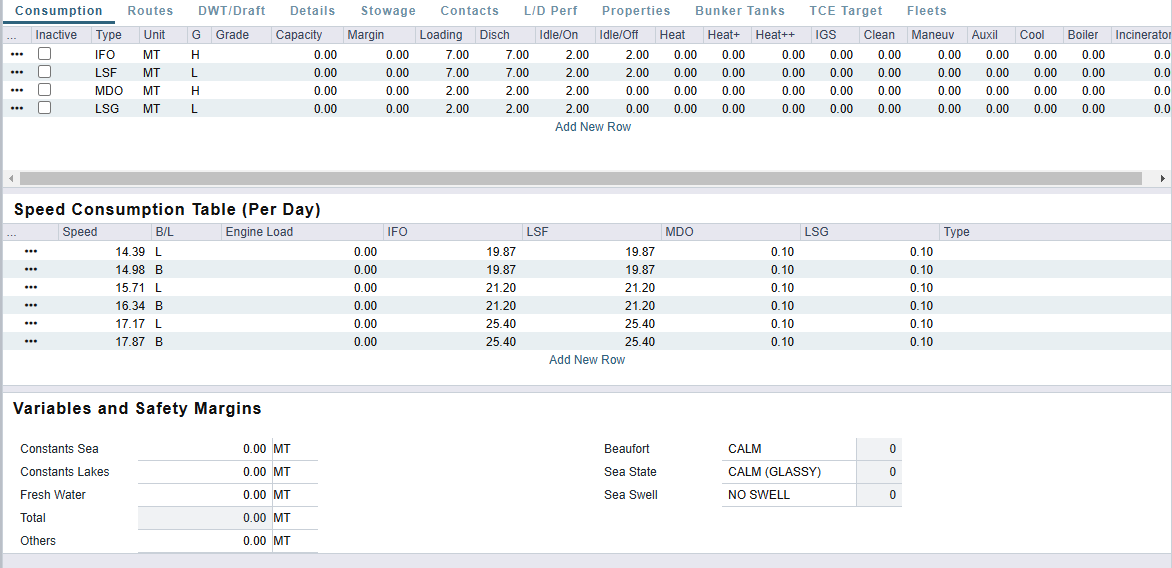IMOS - Bunker Consumption for Cargo Heating
Home > Chartering > Bunker Consumption for Cargo Heating
You can configure bunker consumption used for cargo heating in the following locations:
Data Center
Cargo heating consumption for a voyage references the consumption rates from the Vessel Consumption tab and adheres to the ECA Fuel Zone configuration.
The default value is the first general-type fuel with a heating rate defined.
If no such fuel exists, the first low-sulfur fuel with a heating rate is used.
If there is still no match, a high-sulfur fuel is chosen. If there is no match at all, fuel type and rate are cleared from the cargo and heating is disabled.
Vessel Consumption Tab
When creating a tanker Vessel, on the Consumption tab, you can specify heating consumption for one or more fuel types (in MT/day).

Fuel Zones
On the Fuel Zones form, for each ECA zone, you can define which fuel types can be used for heating.

Estimate Column
On an Estimate column, if the vessel is a tanker, a Heat check box appears next to the Cargo field.
If there is one cargo in the calculation, it can be selected to turn on heating and use the default values from the Data Center.
If multiple cargoes are used, it is disabled and is selected when one or more cargoes have heating set.

CP Terms Details
To enable cargo heating on the CP Terms Details Cargo Bunkers tab, set Heating Cons to any value other than Disabled.

Heating consumption data are pulled from the Data Center, but consumption rates can be overridden. User-entered fields appear highlighted in blue and are used in place of the system-calculated values.
Heat Days can be used to specify how many days the selected fuel type will be used to heat the cargo.
When heating/cooling Days are entered manually, the system will calculate based on the information entered. If left blank, the days will pull in from the itinerary and consume based on fuel configurations.
The resulting quantity of fuel consumed for heating appears in the P&L using the specified bunker price.
